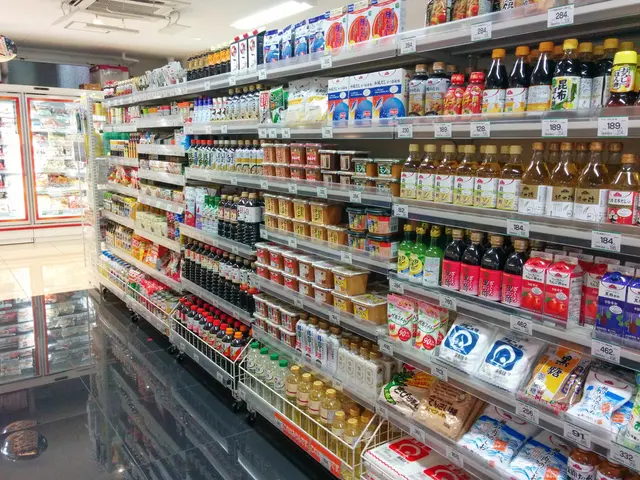Marketing Advancement: Categories, Influential Elements
In the realm of marketing, businesses employ various strategies to boost sales and build customer loyalty. One such category is sales promotion, which includes several key strategies designed to create immediate demand and incentivize purchases.
Sales Promotion Strategies
- Temporary Cost Reduction: By lowering the price of a product for a limited time, companies can generate immediate demand. This can be achieved through a percentage or fixed amount discount on specific or all products.
- Coupons: Providing coupons to customers helps reduce the purchase cost, encouraging repeat buying or re-engagement from past customers.
- Loyalty Programs: Rewarding customers with points, cashback, or other benefits based on their purchases helps attract and retain them over time. This approach is common in industries like airlines, hotels, and retail.
- Loss Leaders: Selling a product at a very low price or even below cost can attract customers who will then buy other more profitable items.
- Joint Promotions: Partnering with other brands to market complementary products or services together expands reach and adds value for consumers.
- Trade-in and Trade-up Plans: Allowing customers to trade old products for new ones (trade-in) or encouraging them to purchase higher-end versions of products (trade-up) can increase sales.
These strategies, often combined or tailored depending on the product, market, and business goals, mainly focus on short-term incentives to boost sales and build customer loyalty.
Broader Promotion Methods
In addition to sales promotions, other forms of promotion include advertising, personal selling, public relations, sponsorship, and social media. These methods are used to highlight the product position, create product image, build consumer awareness, and educate about its benefits.
- Advertising uses commercials, print, online, or broadcast media to build awareness or educate consumers about a product.
- Personal selling involves direct communication between salespeople and customers to build relationships and provide immediate feedback and tailored offers.
- Public relations focuses on managing public opinion and improving the brand image to support sales indirectly.
- Sponsorship provides support or resources to sponsor activities or events such as sports.
- Social media allows companies to interact with potential customers, promote new products or special offers, and direct customers to their online stores.
Push and Pull Promotional Strategies
The promotion strategy is divided into two groups: pull promotional strategy and push promotional strategy. Pull promotional strategy targets end consumers to encourage them to buy products, while push promotional strategy targets intermediaries (distributors and retailers) to encourage them to promote, shelf, and sell products to end consumers.
Above and Below the Line Promotion
Promotions are divided into two groups based on the level of company control: above the line promotion and below the line promotion. Above the line promotion is where the company has no direct control over the target audience and pays to use the promotional space (e.g., advertising on television, radio, magazines, and newspapers). Below the line promotion, on the other hand, is where the company has direct control over promotions and can communicate with customers without paying for the media (e.g., sales promotions such as coupons and buy one get one free).
The effectiveness of each promotion method varies, and the company considers the market size and available resources when selecting the promotion mix. The choice of promotional methods is influenced by several factors, including promotion purpose, types of products, company infrastructure and resources, product life cycle, distribution infrastructure, market size, and pricing strategy.
Promotion combines several different methods, such as advertisement, sales promotion, personal selling, direct marketing, public relations, sponsorship, and social media. Whether a big business using national advertising or a small company with limited resources targeting the local market, the goal remains the same: to increase public awareness, stimulate sales, and increase sales.
- In the realm of finance, a business might allocate resources towards adopting a variety of sales promotion strategies, such as temporary cost reduction, coupons, or loyalty programs, to boost short-term sales and foster customer loyalty.
- Beyond sales promotions, businesses may also delve into broader promotional methods like advertising, personal selling, public relations, sponsorship, and social media to elevate their product position, create a positive image, and educate the public about their offerings.





